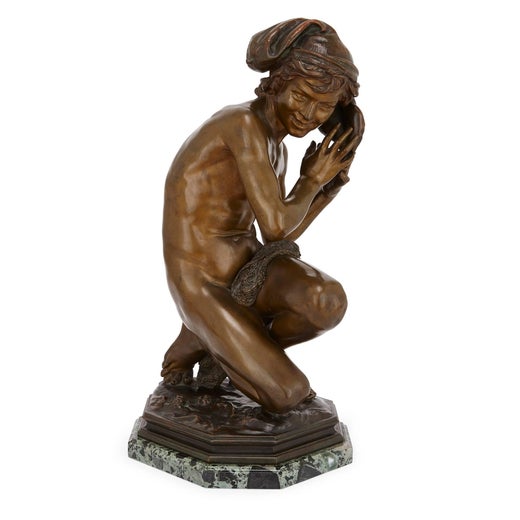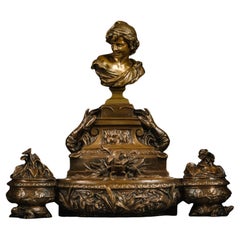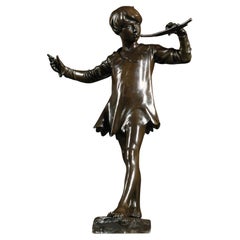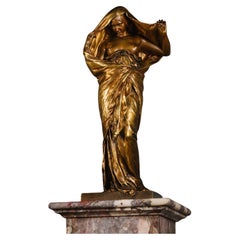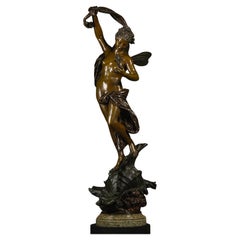'Le Génie de la Danse, n°2', a Patinated Bronze Figure by Carpeaux, Dated 1872
About the Item
- Creator:Jean-Baptiste Carpeaux (Sculptor)
- Dimensions:Height: 33.47 in (85 cm)Width: 13.39 in (34 cm)Depth: 9.85 in (25 cm)
- Style:Napoleon III (Of the Period)
- Materials and Techniques:Bronze,Patinated
- Place of Origin:
- Period:
- Date of Manufacture:Dated 1872
- Condition:
- Seller Location:Brighton, GB
- Reference Number:Seller: B740501stDibs: LU1028014642772
Jean-Baptiste Carpeaux
Jean-Baptiste Carpeaux was born on 11 May, 1827 at Valenciennes, France the son of a mason. He initially studied at the Valenciennes art academy before the family moved to Paris. In 1844, Carpeaux entered the École des Beaux-Arts and also studied under François Rude and Francisque Duret. He started exhibiting at the Paris Salon in 1853 and won the Prix de Rome in 1854. Soon after, Carpeaux traveled to Italy, where he spent time in Rome studying at the French Academy. There, he produced several sculptures, which he exhibited at the Paris Salon in 1858. The critical acclaim Carpeaux received led to several important state and private commissions, helping him to achieve success and establishing his reputation. He returned to Paris in 1861 and went on to found his atelier in 1866, casting bronze editions of his sculptures. In the same year, Carpeaux received the chevalier of the Legion of Honour. He won first prize at the Exposition Universelle of 1867 in Paris. Carpeaux died on 12th October 1875, at George Barbu Știrbei's château in Bécon-les-Bruyères, outside Courbevoie near Paris. Examples of his work can be found at the National Museum, Warsaw, Metropolitan Museum of Art, New York and the Orsay Museum, Paris, France. Some of his public and architectural works can still be found at the Louvre Palace, Opera Garnier, Valenciennes and the Jardin du Luxemburg.
You May Also Like
Antique 1870s French Empire Figurative Sculptures
Bronze
Antique Late 19th Century French Belle Époque Figurative Sculptures
Bronze
Antique 19th Century French Napoleon III Figurative Sculptures
Marble, Bronze
Antique 1860s French Art Nouveau Figurative Sculptures
Marble, Bronze
Antique Early 1900s French Neoclassical Figurative Sculptures
Plaster
Antique Late 19th Century French Neoclassical Busts
Bronze
Antique 1870s French Busts
Terracotta
20th Century Busts
Plaster
Antique Late 19th Century French Belle Époque Figurative Sculptures
Siena Marble, Bronze
20th Century French Art Nouveau Figurative Sculptures
Bronze
More From This Seller
View AllAntique 19th Century French Napoleon III Inkwells
Bronze
Vintage 1910s English Figurative Sculptures
Bronze
Early 20th Century French Figurative Sculptures
Bronze
Antique 19th Century Italian Figurative Sculptures
Bronze
Early 20th Century Austrian Figurative Sculptures
Bronze
Antique Late 19th Century French Figurative Sculptures
Bronze
